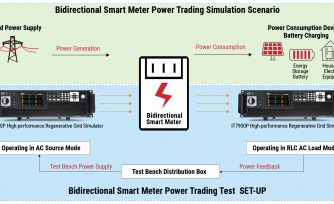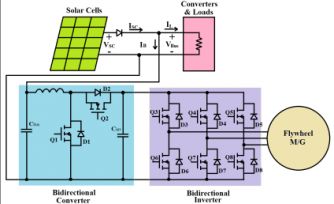Testing and Aging of Power Supply for Low-Earth Orbiting Satellites ——ITECH Multi-channel Electronic Load IT8700
At the end of April 2021, China Satellite Network Group Co., Ltd. was officially established and formally participated in the global competition for high-speed Internet access services in space. Looking at the world, the Starlink project launched by Tesla founder Elon Musk, the British company OneWeb and the Amazon Group compete with each other in this field. According to incomplete statistics, nearly 30 companies around the world have announced the deployment of satellite Internet constellations, and they plan to launch more than 100,000 satellites.
Satellite Internet can often be divided into high orbit and low orbit. The orbit of high-orbit satellites is about 36,000 kilometers above the ground, also known as geosynchronous orbit (GEO). Although they are all moving at high speed, the orbital period of the satellites in this orbit is strictly consistent with the earth's rotation period, and they remain "stationary" relative to the ground, and the area they cover is also fixed, so it is easier to establish communication services. Utilizing this feature, broadband communication can be realized through high-orbit satellites, and the number of satellites required does not need to be too large. However, using high-orbit satellites to realize communication services is equivalent to sending signals from the surface of the earth to a distance of 36,000 kilometers. This kind of delay has little effect on general calls or webpage access, but it is a "disaster" for applications with high real-time requirements, such as online games and drone remote control. In addition, the terminal for receiving high-orbit satellite signals on the ground must be relatively large in order to receive such long-distance signals well.
Low-orbit (LEO) satellites are located in orbits between 300 and 1000 km above Earth. In low-Earth orbit, the communication transmission delay between the ground and the satellite is up to milliseconds, which is enough to meet the needs of the Internet of Vehicles, automatic driving, etc., and the receiving terminal can be made into a handheld.
Because low-orbit satellites have the advantages of wide coverage, low cost, and low latency, satellite Internet may be the best choice for connecting remote areas that cannot be covered by ground base stations. Taking the 1,000-kilometer low-Earth orbit as an example, the satellite circles the earth for more than 100 minutes. Hundreds of thousands of satellites form a constellation at this orbital height, thereby achieving seamless global coverage.
There are many instruments and equipment on the satellite that need power supply, and the moving parts and pyrotechnic devices on the satellite also need power supply to work. The development level of the power system plays an important role in improving the performance of satellites and the ability to complete extensive and complex tasks. At present, the power sources used on satellites mainly include solar battery power, chemical batteries, electromechanical batteries (EMB) and so on.
Due to their close proximity to the sun, LEO satellites require low-power supplies, and typically derive all of their energy from sunlight. However, most moons spend part of their rotation period in the sun's shadow. Therefore, energy storage systems are inevitable to keep them powered during sun shadows.
LEO satellites have an orbital period of 1.5 to 1.74 hours, so the charge/discharge frequency is very high, which reduces the chemical battery life to 3-5 years. Flywheel energy storage systems or electromechanical batteries (EMB) are often cited for their infinite charge-discharge cycles and satellite lifetime, higher efficiency, higher energy density and depth of discharge, thermal independence, and their application in satellite attitude control. For satellite energy storage. Figure 1 shows a block diagram of the power generation section in a LEO satellite. The MPPT converter is connected in series with the solar cells and all the power generated has to be processed at MPPT and multiples of MPPT efficiency. The MPPT converter can also control the charging rate of the battery.
In the case of using EMB as satellite energy storage, as shown in Figure 2, due to the wide range of voltage variation, the MPPT converter must be connected in parallel with the DC bus voltage. Bidirectional DC-DC converters and three-phase inverters require charge and discharge states.
ITECH Electronics IT8700 (IT8700P) series multi-channel electronic loads have been used by internationally renowned companies for the testing and aging of low-orbit satellite power supplies for a long time. The IT8700 series adopts a swappable module design, the single frame can reach 8 channels, and the expansion frame can reach 16 channels. At the same time, it has the characteristics of high precision, high dynamic speed, and high stability. It can test the MPPT of solar photovoltaic panels with IT9380 software. It has built-in communication interfaces such as LAN, USB, RS232, and GPIB. It supports SCPI protocol and can be used for system construction and remote control. Widely used in the testing of aviation, aerospace, automotive electronics, UPS power supply, solar power supply, LED lighting and other fields.
ITECH will soon launch the IT8700P+ series, a high-current precision version. The modules can be connected in master-slave parallel, and the combination of current and power is more flexible.


